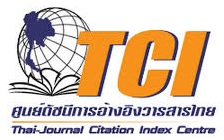ปัจจัยการประสบความสำเร็จในการใช้งานเว็บไซต์พาณิชย์อิเล็กทรอนิกส์สองมิติ
Keywords:
E-Business, E-Commerce, 2DAbstract
E-business, allowing for convenient operation and more efficient for many businesses to response the demand of both suppliers and customers, to reduce cost of goods and services by focusing on the medium of e-commerce sites on the Web. However, the old patterns are not great to try the product on the site. This paper is presented the new e-commerce ’s demand, to explore the demand and problems data by observingthe sample of 100 persons, and then two-dimensional e-commerce sites to use to meet their needs and solve problems. Evaluations using a combination of two of the original sample. Found that the samples are satisfactory overall in the large and that the site is to the highest level. In part of comments, the testing products the siteof user should be applied on three dimension and the suitable photos which are shown for improving the reliability of the site.
บทคัดย่อ
ธุรกิจอิเล็กทรอนิกส์ได้ช่วยให้การดำเนินธุรกิจให้มีความสะดวกรวดเร็ว และมีประสิทธิภาพมากยิ่งขึ้นโดยทำให้ธุรกิจสามารถตอบสนองความต้องการทั้งคู่ค้าและลูกค้า ลดต้นทุนในตัวสินค้าและบริการโดยเน้นไปที่สื่อกลางอย่างเว็บไซต์ อย่างไรก็ตาม เว็บไซต์พาณิชย์อิเล็กทรอนิกส์ในปัจจุบันยังคงติดอยู่ในรูปแบบเดิม คือไม่สามารถทดลองสินค้าบนเว็บไซต์ได้ งานวิจัยนี้จึงได้ศึกษา ความต้องการในพาณิชย์อิเล็กทรอนิกส์รูปแบบใหม่ สำรวจความต้องการและปัญหาที่พบโดยการเก็บข้อมูลจากกลุ่มตัวอย่างจำนวน 100 ชุด จากนั้นนำต้นแบบเว็บไซต์พาณิชย์อิเล็กทรอนิกส์สองมิติ เข้ามาใช้งานเพื่อตอบสนองความต้องการและแก้ปัญหาที่พบ และทำการประเมินผลโดยใช้แบบประเมินชุดที่ 2 โดยกลุ่มตัวอย่างเดิม พบว่ากลุ่มตัวอย่างมีความพึงพอใจในภาพรวมอยู่ในระดับมากและประเมินว่าเว็บไซต์มีความน่าสนใจสูงที่สุดในระดับมาก ส่วนข้อเสนอแนะในด้านการลองสินค้าในเว็บไซต์ของผู้ใช้ควรมีการลองสินค้าได้แบบสามมิติขนาดของรูปภาพที่นำมาแสดงผลปรับให้เหมาะสม และเพิ่มความน่าเชื่อถือของเว็บไซต์เพื่อนำไปปรับปรุงต้นแบบเว็บไซต์ต่อไป
References
คนึงนุช สารอินจักร์. (2548). ระบบต้นแบบร้านค้าเสมือนสามมิติสำหรับพัฒนาตลาดเครื่องปั้นดินเผาพื้นบ้านกรณีศึกษาบ้านหม่อนเขาแก้ว ตำบลพิชัย อ.เมือง จ.ลำปาง. การศึกษาค้นคว้าด้วยตนเอง วิทยาศาสตร์มหาบัณฑิตมหาวิทยาลัยนเรศวร.
ทวีวรรณ น้อยน้ำคำ. (2548). ปัจจัยที่มีผลต่อพฤติกรรมผู้บริโภคคนไทยในการซื้อสินค้าและบริการทางการพาณิชย์อิเล็กทรอนิกส์ (E-Commerce) เพื่อศึกษาถึงพฤติกรรมของผู้บริโภค.มหาวิทยาลัยราชภัฎนครสวรรค์.
บุญชม ศรีสะอาด. (2545). การวิจัยเบื้องต้น. พิมพ์ครั้งที่ 7, กรุงเทพฯ.
พวา พันธ์ุเมฆา, สุจิตรา หงสพฤกษ์. (มปป). การออกแบบงานวิจัยทางสารสนเทศศาสตร์. การวิจัยทางสารสนเทศศาสตร์.
พันธ์ศักดิ์ ศิริรัชตพงษ์, ชฎามาศ ธุวะเศรษฐกุล. (2551). รายงานผลการสำรวจ กลุมผู้ใช้อินเทอร์เน็ตในประเทศไทยปี 2551.
ภาวุธ พงษ์วิทยภานุ. (2547). e-Commerce สุดยอดช่องทางรวย ทุนน้อย ทำง่าย สร้างรายได้ 24 ชั่วโมง. บริษัท ตลาด ดอท คอม จำกัด, กรุงเทพมหานคร, 2550.
ภิเษก ชัยนิรันดร์. (2552). Marketing Click กลเม็ดเคล็ดลับการตลาดออนไลน์. บริษัท ซีเอ็ดยูเคชั่น จำกัด (มหาชน), กรุงเทพมหานคร.
สำนักงานคณะกรรมการธุรกรรมทางอิเล็กทรอนิกส์. (2552). ความรู้เบื้องต้นพาณิชย์อิเล็กทรอนิกส์. [ออนไลน์]. ได้จาก: http://www.etcommission.go.th/
สำนักงานสถิติแห่งชาติ. (2554). รายงานผลที่สำคัญการสำรวจสถานภาพการพาณิชย์อิเล็กทรอนิกส์ของประเทศไทย พ.ศ. 2554 (e-Commerce). สำนักงานสถิติแห่งชาติกรุงเทพมหานคร 2554.
สำนักงานสถิติแห่งชาติ. (2555). ทิศทาง e- Commerce ไทย. [ออนไลน์]. ได้จาก: http://service.nso.go.th/nso/nsopublish/citizen/news/news_e-comm.jsp
Bing-feiGu, Hai-yan Kong, Ping-yingGu. (2011). Study of 2D Non – Contact Anthropometric System and Application. Future Computer Sciences and Application (ICFCSA). pp.150-153.
Christiana A ,(2010). The Evolution of E-Business Environement in Fashion Sector. 2010 International
Conference on Intelligent Systems, Modelling and Simulation. pp.443-449.
Internetworldstats. (2011). Internet User in the World Distribution by world Region 2011. [Online]. Available:
http://www.internetworldstats.com/stats.htm
M. Quaddus Jun Xu (2007). Adoption of e-Commerce: A decision theoretic framework and an illustrative application. Computer and information technology, 2008. iccit 2007 10th international conference.
Nielsen.(2010). Global Trends in Online Shopping. A Nielsen Global Consumer ReportJune 2010. [Online]. Available: http://hk.nielsen.com/documents/Q12010OnlineShoppingTrendsReport.pdf
Tian Chen, Zhi-geng Pan, Jian-mingZheng (2008). Easy Mall – An Interactive Virtual Shopping System. Fuzzy Systems and Knowledge Discovery. pp.669-673.
Turban, E. and King, D. (2003). Introduction to E-Commerce, Prentice Hall: New Jersey.
XianhuiZeng, Yongsheng Ding, and Shihuang Shao.(2009). Applying Image Warping Technique to Implement Real-Time Virtual Try-on Based on Person’s 2D Image. Second International Symposium on Information Science and Engineering.IEEE Computer socity. pp.383-387.
Zhou, X., Wei, J., Xu, C.-Z.(2004). Modeling and analysis of 2D service differentiation one-Commerce
servers. Distributed Computing Systems. pp.740-747.
Zhou, X., Wei, J., Xu, C.-Z. (2006). Resource Allocation for Session-Based Two-Dimensional Service
Differentiation on e-Commerce Servers. Parallel and Distributed Systems. pp.838-850.
Zhu Xinjuan Huang Junfang Zhou Qianming. (2011). Apparel Image Matting and Applications in Ecommerce.
Information Technology and Artificial Intelligence Conference (ITAIC), 2011 6th IEEE Joint International.
pp.278-282.





 ThaiJO
ThaiJO